Business loans paid off
Increase in business credits volume inspires to give optimistic conclusions about economic recovery. Started in 2016, recovery of business credit market was preserved during the first months of 2019.
Extension of credit portfolio does not have impact on the ability of organizations to service old debts: according to the Central Bank of Russia, dynamics of total scheduled credit debts is 4 times lower than growth of new loans in 2019, that means that companies pay credits in advance. At the same time decrease in share of overdue payment of debts is observed.
Business loans volume has significantly grown in Russia
Volume of Russian business credits provided by domestic banks is at its height: according to the data of the Central Bank of Russia for 2018, banks provided organizations and individual entrepreneurs with loans for amount over 45 trillion RUB, that is on 17% higher than in previous year. That amount includes small and medium enterprises (SME) provided with loans for amount of 6,8 trillion RUB.
Following the results of the first four months of 2019, slight reduction of credits growth rate is observed: during January-April of 2019 companies attracted 15,5 trillion RUB of borrowed funds, including SME – 2,4 trillion RUB. Growth rate amounted to 16,3% in comparison to the similar period of 2018. Macroeconomic factors were crucial for this growth rate: VAT increase had impact on decrease in consumers` demand by relatively low inflation rates.
Such quick positive dynamics has not been observed since 2013 (s. picture 1). If this tendency is preserved, at the end of 2019 increase in provided loans amount up to 50-52 trillion RUB or about 46% of GDP can be expected.
Recovery of business credit market shows overcoming of investment pause. Companies begin to revolve basic funds, invest in increase of sales, marketing, production development.
 Picture 1. Total volume of business loans provided for the period, lending dynamics
Picture 1. Total volume of business loans provided for the period, lending dynamicsCompanies pay off provided loans earlier
Increase in debts of organizations on earlier provided borrowed funds is several times lower than the increase in new loans rate. Total scheduled debts in business credits amounted to 31,8 trillion RUB on May 1, 2019. Compared to the similar period of 2018, planned debts have on 4,2% increased, that is 4 times lower than growth rate of new loans for January-April of 2019. (s. pictures 1-2). Thus, companies, obtaining new loans, do not forget to pay previous debts to the banks.
Stabilization of overdue debts share is outlined: it did not exceed 7,1% of the total loan debts share on May 1, 2019. According to the Central Bank of Russia, maximum overdue share, since 2009, was 7,5% – on September 1, 2016. The lower overdue debts share is, the fewer companies face financial difficulties and inability to service credit obligations.
 Picture 2. Scheduled debts on credits on May, 1 of every year, debts dynamics
Picture 2. Scheduled debts on credits on May, 1 of every year, debts dynamicsCompanies of Moscow collect 39% of business scheduled debts on credits
The largest amount of borrowed funds was collected by the companies and individual entrepreneurs from Moscow – 12,5 trillion RUB on May 1, 2019, overdue debt share amounted to 7,4%. They are followed by organizations from Saint-Petersburg – 2,2 trillion RUB and Moscow region – 2,1 trillion RUB.
Entrepreneurs from Saint-Petersburg have got the smallest overdue debt share out of the top-3 group - 6,3%. Among Top-10 regions with the largest debts amount on credits the companies of the Yamal-Nenets Autonomous District have the smallest overdue debts share – 0,9%.
Table 1. Top-10 regions with the largest scheduled debts on credits of legal entities and individual entrepreneurs, on May 1, 2019.
| Rank | Subject | Debts on credits, billion RUB | Overdue debt share, % |
| 1 | Moscow | 12 455 | 7.4 |
| 2 | Saint-Petersburg | 2 218 | 6.3 |
| 3 | Moscow region | 2 149 | 7.8 |
| 4 | Krasnodar territory | 1 078 | 5.8 |
| 5 | Sverdlovsk region | 1 010 | 3.0 |
| 6 | Krasnoyarsk territory | 767 | 2.7 |
| 7 | Yamal-Nenets AD | 741 | 0.9 |
| 8 | The Republic of Tatarstan | 652 | 3.9 |
| 9 | Kemerovo region - Kuzbass | 544 | 6.2 |
| 10 | Chelyabinsk region | 536 | 5.8 |
| Top-10 subjects of the RF | 22 151 | 6.5 | |
| Other 75 subjects of the RF | 9 736 | 8.5 | |
| Total for the RF | 31 887 | 7.1 | |
Companies of the Yamal-Nenets Autonomous District and the North Caucasus Republics have got the largest overdue loans share
Taking into consideration overdue debt share on credits, financial state of companies in general in one particular region can be analyzed. The most unfavorable business environment is in the Yamal-Nenets Autonomous District, where 97,8% of debts were overdue on May 1, 2019. Large share of overdue debts in rich in resources region can be explained by small amount of active companies, when even one debtor can influence the statistics.
They are followed by organizations from the Republics of Dagestan and Ingushetia. In these regions overdue debts share on credits 69,2% and 66,8% correspondingly, that reflects unsatisfactory level of social and economic development (s. table 2).
Table 2. Top-10 regions with the largest overdue debts of legal entities and individual entrepreneurs on credits, on May 1, 2019.
| Rank | Subject | Debts on credits, billion RUB | Overdue debt share, % |
| 1 | Nenets AD | 12 | 97,9 |
| 2 | The Republic of Dagestan | 33 | 69,2 |
| 3 | The Republic of Ingushetia | 2 | 66,8 |
| 4 | The Kabardino-Balkar Republic | 34 | 62,2 |
| 5 | The Republic of Kalmykia | 6 | 41,9 |
| 6 | Altay Territory | 115 | 35,3 |
| 7 | The Republic of Komi | 39 | 30,8 |
| 8 | The Republic of Altay | 12 | 24,9 |
| 9 | The Republic of North Osetia – Alania | 11 | 23,1 |
| 10 | Kaluga region | 159 | 20,5 |
| Total for the RF | 31 887 | 7.1 | |
Conclusion
In spite of low rates of GDP that amounted to 0,5% in the Q1 of 2019, Russian banks increase volume of business credits fast, that shows stabilization of macroeconomic situation in the country and beginning of new investment wave. It was not to be expected under conditions of economic slowdown when credit provision is reducing. Interest rate cut by the Central Bank of Russia to 7,5% from June 17, 2019 gives a cue to entrepreneurs for further easing of loans. Credit portfolio of the majority of companies is not crucial for stable financial state, overdue debts share on credits is slowly decreasing. Newly attracted funds at a rational use can promote development of companies and recovery of Russian economy.
Activity trends in fish processing
Information agency Credinform represents an overview of activity trends of the largest Russian companies in processing and canning of fish and seafood.
Processing companies with the largest volume of annual revenue (TOP-10 and TOP-1000) were selected for the analysis, according to the data from the Statistical Register for the latest available periods (for 2015-2017). The analysis was made on the basis of the data of the Information and Analytical system Globas.
Net assets value is an indicator, reflecting the real value of company’s property, is calculated annually as the difference between assets on the enterprise balance and its debt obligations. The indicator of net assets is considered negative (insufficiency of property), if company’s debt exceeds the value of its property.
The average values of net assets of TOP-1000 enterprises tend to increase over the ten-year period (Picture 1).
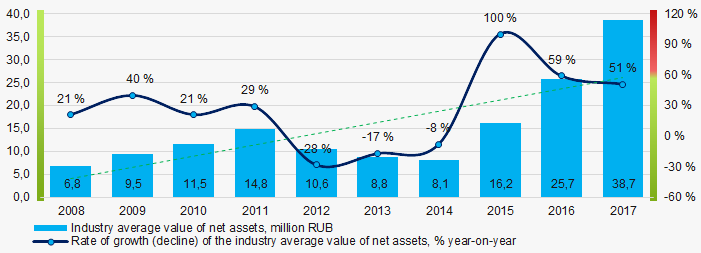 Picture 1. Change in the industry average indicators of the net asset value of companies, processing and canning fish and seafood, in 2008 – 2017
Picture 1. Change in the industry average indicators of the net asset value of companies, processing and canning fish and seafood, in 2008 – 2017 The shares of TOP-1000 enterprises with insufficiency of assets were at relatively high level with a tendency to increase in the last three years (Picture 2).
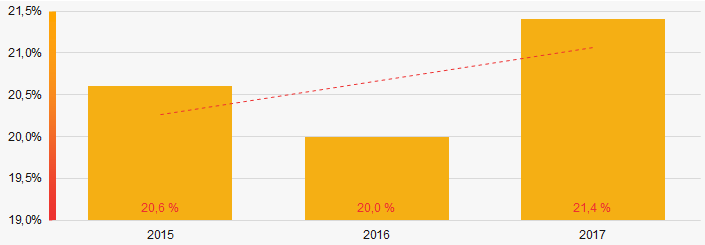 Picture 2. Shares of enterprises with negative values of net assets in TOP-1000 in 2015 – 2017
Picture 2. Shares of enterprises with negative values of net assets in TOP-1000 in 2015 – 2017Sales revenue
The revenue volume of 10 leading companies of the industry made 41% of the total revenue of TOP-1000 in 2017 (Picture 3). It points to a relatively high level of monopolization in the industry.
 Picture 3. Shares of participation of TOP-10 companies in the total revenue of TOP-1000 enterprises for 2017
Picture 3. Shares of participation of TOP-10 companies in the total revenue of TOP-1000 enterprises for 2017In general, there is a trend towards an increase in average industry revenue over the ten-year period (Picture 4).
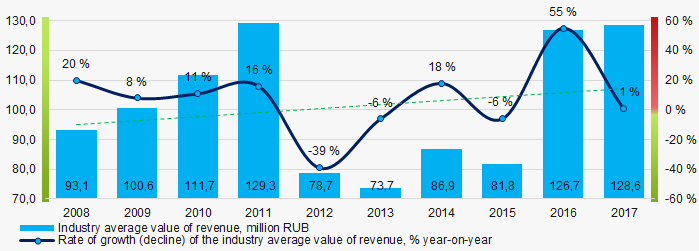 Picture 4. Change in the industry average revenue of TOP-100 companies, processing and canning fish and seafood, in 2008 – 2017
Picture 4. Change in the industry average revenue of TOP-100 companies, processing and canning fish and seafood, in 2008 – 2017 Profit and loss
Industry average values of net profit trend to increase over the past ten years (Picture 5).
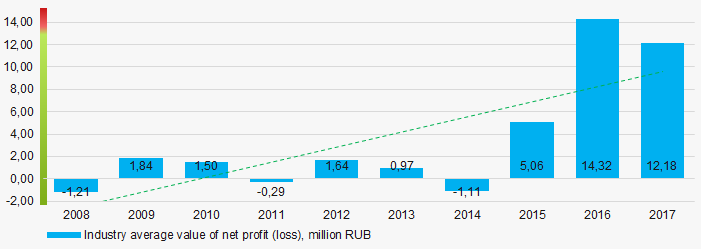 Picture 5. Change in the industry average indicators of net profit of companies, processing and canning fish and seafood, in 2008 – 2017
Picture 5. Change in the industry average indicators of net profit of companies, processing and canning fish and seafood, in 2008 – 2017 Average values of net profit’s indicators of TOP-1000 companies decrease for the three-year period, at the same time the average value of net loss also decreases. (Picture 6).
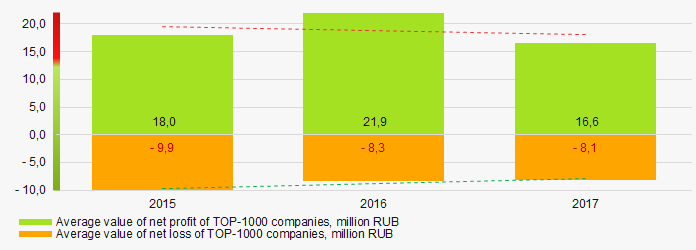 Picture 6. Change in the industry average values of indicators of net profit and net loss of TOP-1000 companies in 2015 – 2017
Picture 6. Change in the industry average values of indicators of net profit and net loss of TOP-1000 companies in 2015 – 2017Key financial ratios
Over the ten-year period the average indicators of the total liquidity ratio of TOP-1000 enterprises were in the range of recommended values - from 1,0 up to 2,0, with a tendency to increase (Picture 7).
The total liquidity ratio (the relation of the amount of current assets to short-term liabilities) shows the sufficiency of company’s funds for repayment of its short-term liabilities.
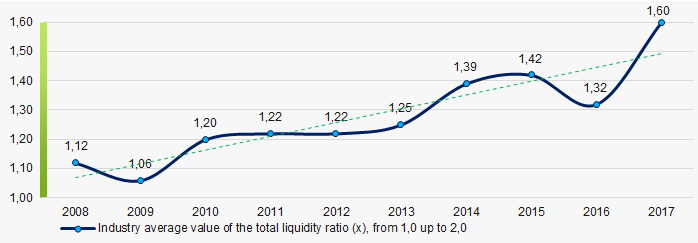 Picture 7. Change in the industry average values of the total liquidity ratio of companies, processing and canning fish and seafood, in 2008 – 2017
Picture 7. Change in the industry average values of the total liquidity ratio of companies, processing and canning fish and seafood, in 2008 – 2017The industry average values of the return on investment ratio trend to increase for ten years (Picture 8).
The ratio is calculated as the relation of net profit to the sum of own capital and long-term liabilities and demonstrates the return on the equity of own capital involved in the commercial activity and the long-term borrowed funds of an organization.
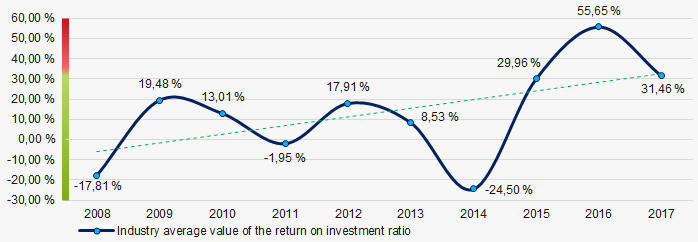 Picture 8. Change in the industry average values of the return on investment ratio of companies, processing and canning fish and seafood, in 2008 – 2017
Picture 8. Change in the industry average values of the return on investment ratio of companies, processing and canning fish and seafood, in 2008 – 2017Asset turnover ratio is calculated as the relation of sales proceeds to the average value of total assets for a period and characterizes the efficiency of use of all available resources, regardless of the sources of their attraction. The ratio shows how many times a year a complete cycle of production and circulation is made, yielding profit.
This ratio of business activity showed a tendency to decrease over the ten-year period (Picture 9).
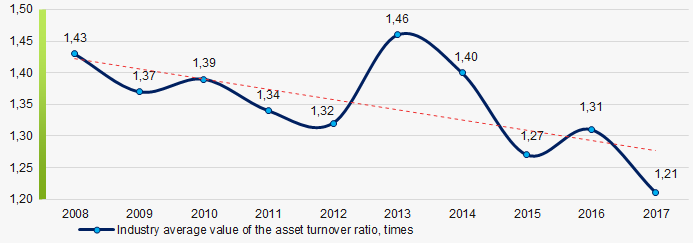 Picture 9. Change in the industry average values of the asset turnover ratio of companies, processing and canning fish and seafood, 2008 – 2017
Picture 9. Change in the industry average values of the asset turnover ratio of companies, processing and canning fish and seafood, 2008 – 2017Small business
93% of TOP-1000 companies are registered in the Register of small and medium-sized enterprises of the Federal Tax Service of the RF. At the same time, their share in the total revenue amounted to 47% that is more than two times higher than the national average (Picture 10).
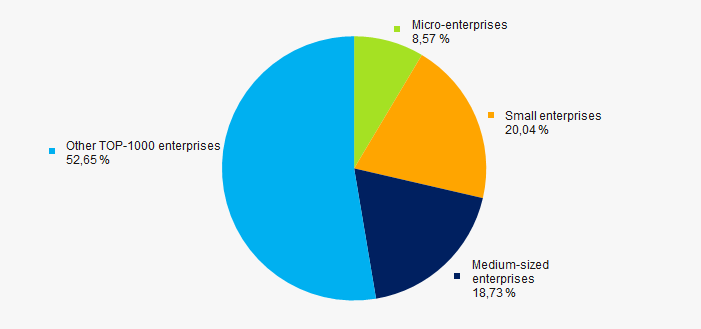 Picture 10. Shares of proceeds of small and medium-sized enterprises in TOP-1000 companies, %
Picture 10. Shares of proceeds of small and medium-sized enterprises in TOP-1000 companies, %Main regions of activity
The TOP-1000 companies are distributed unequal across Russia, taking into account the specifics of production, and registered in 75 regions. More than 57% of their revenue are concentrated in the Kamchatka territory, Saint-Petersburg, Moscow and Kaliningrad regions (Picture 11).
 Picture 11. Distribution of the revenue of TOP-1000 companies by Russian regions
Picture 11. Distribution of the revenue of TOP-1000 companies by Russian regionsFinancial position score
An assessment of the financial position of TOP-1000 companies shows that that more than 40% of them are in an average financial position (Picture 12).
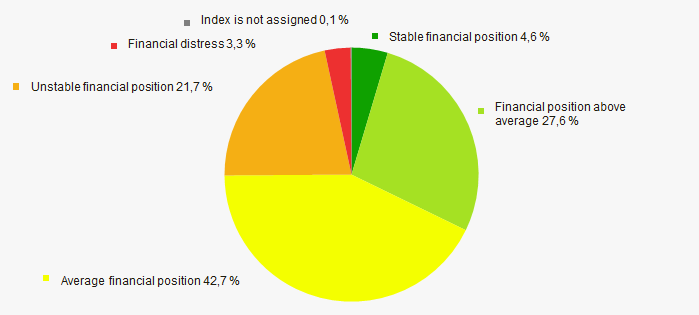 Picture 12. Distribution of TOP-1000 companies by financial position score
Picture 12. Distribution of TOP-1000 companies by financial position scoreSolvency index Globas
The largest part of TOP-1000 companies got Superior/High or Strong/Medium Solvency index Globas, that points to their ability to pay off their debts in time and fully (Picture 13).
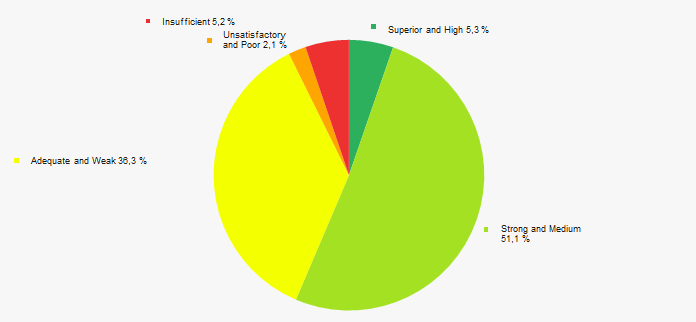 Picture 13. Distribution of TOP-1000 companies by solvency index Globas
Picture 13. Distribution of TOP-1000 companies by solvency index GlobasIndustrial production index
According to the Federal State Statistics Service, there is a tendency towards a decrease in indicators of the industrial production index in the field of processing and canning fish and seafood during 2018 - 2019 (Picture 14). At the same time, the average index from month to month was 102,4%.
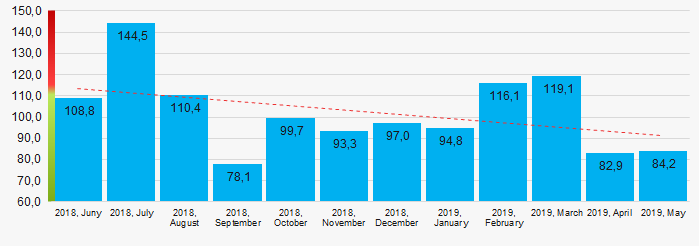 Picture 14. Industrial production index in 2018 – 2019, (%)
Picture 14. Industrial production index in 2018 – 2019, (%)According to the same information, the share of processing and canning of fish and seafood in the revenue volume from the sale of goods, products, works, and services made 0,1% countrywide for 2018.
Conclusion
A comprehensive assessment of activity of the largest Russian companies in processing and canning of fish and seafood, taking into account the main indices, financial indicators and ratios, points to the prevalence of positive trends in the industry (Table 1).
| Trends and evaluation factors | Specific share of factor, % |
| Rate of growth (decline) in the average size of net assets |  10 10 |
| Increase / decrease in the share of enterprises with negative values of net assets |  -10 -10 |
| Rate of growth (decline) in the average size of revenue |  10 10 |
| Level of competition |  -10 -10 |
| Rate of growth (decline) in the average size of profit (loss) |  10 10 |
| Growth / decline in average values of net profit of TOP-1000 companies |  -10 -10 |
| Growth / decline in average values of net loss of TOP-1000 companies |  10 10 |
| Increase / decrease in average values of total liquidity ratio |  10 10 |
| Increase / decrease in average values of return on investment ratio |  10 10 |
| Increase / decrease in average values of asset turnover ratio, times |  -10 -10 |
| Share of small and medium-sized enterprises in the industry in terms of revenue being more than 22% |  10 10 |
| Regional concentration |  5 5 |
| Financial position (the largest share) |  5 5 |
| Solvency index Globas (the largest share) |  10 10 |
| Industrial production index |  -5 -5 |
| Average value of factors |  3,0 3,0 |
 positive trend (factor),
positive trend (factor),  negative trend (factor).
negative trend (factor).